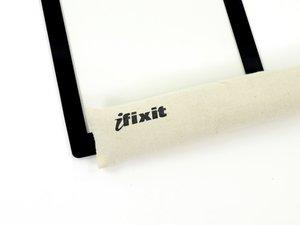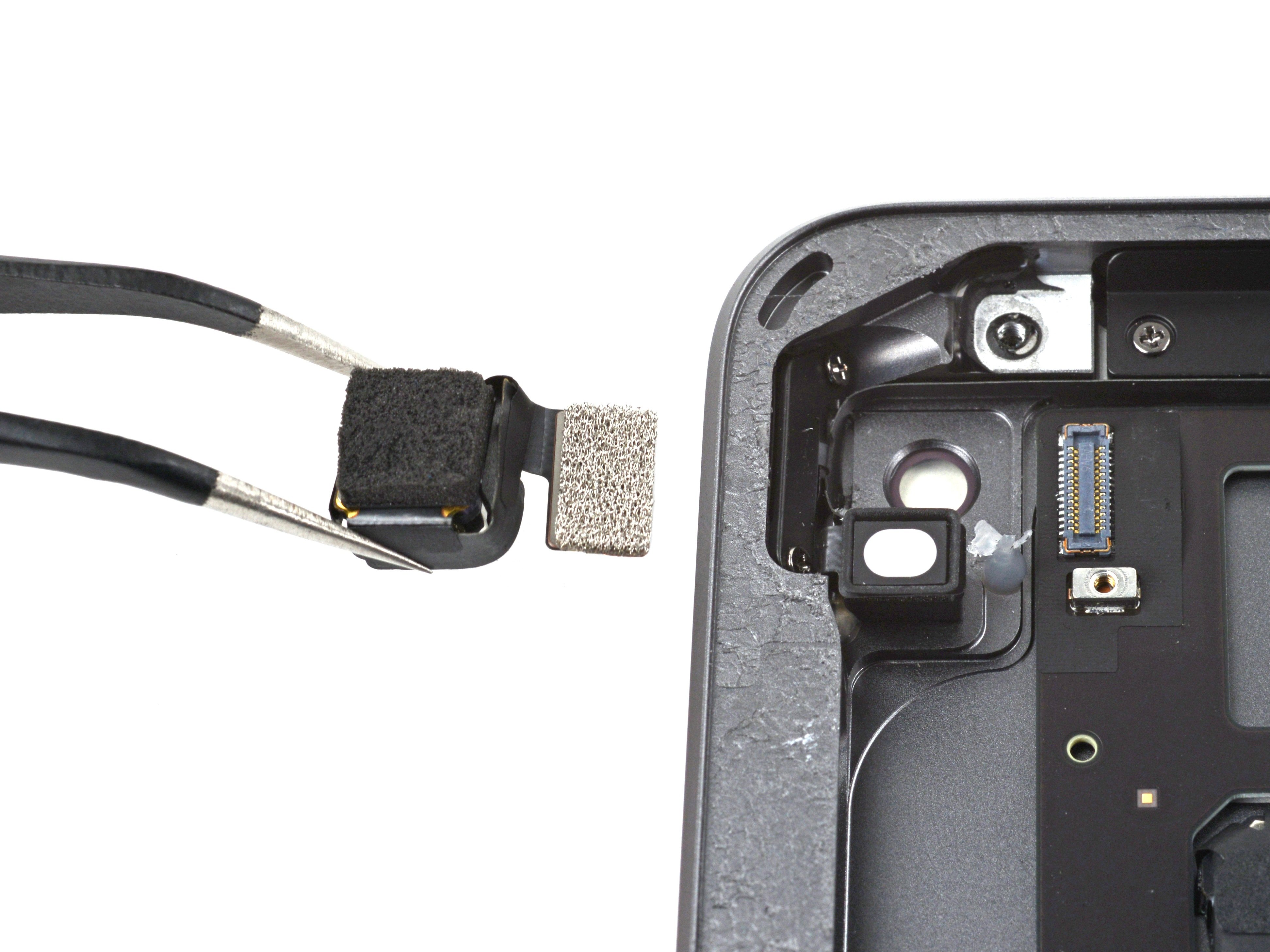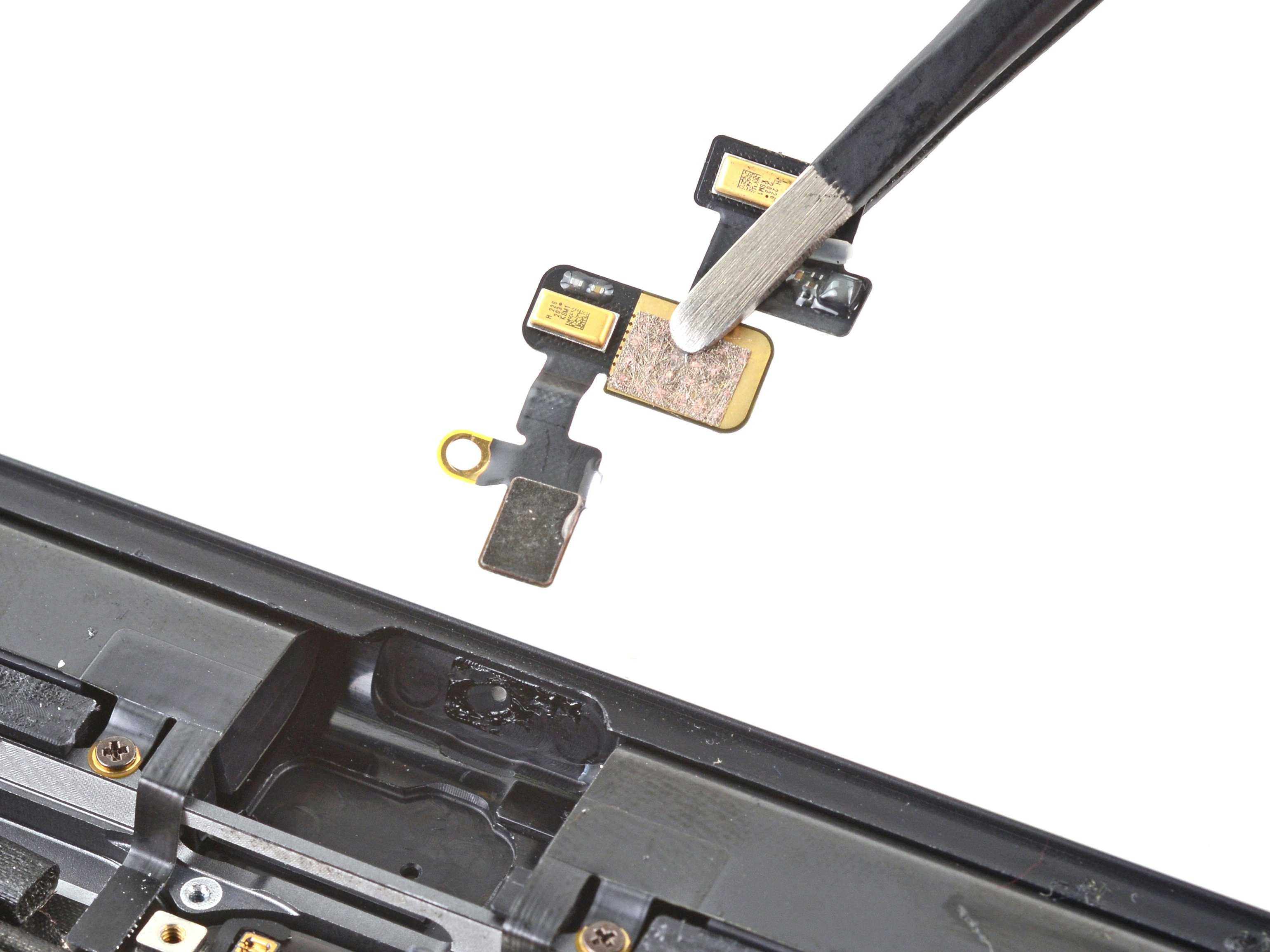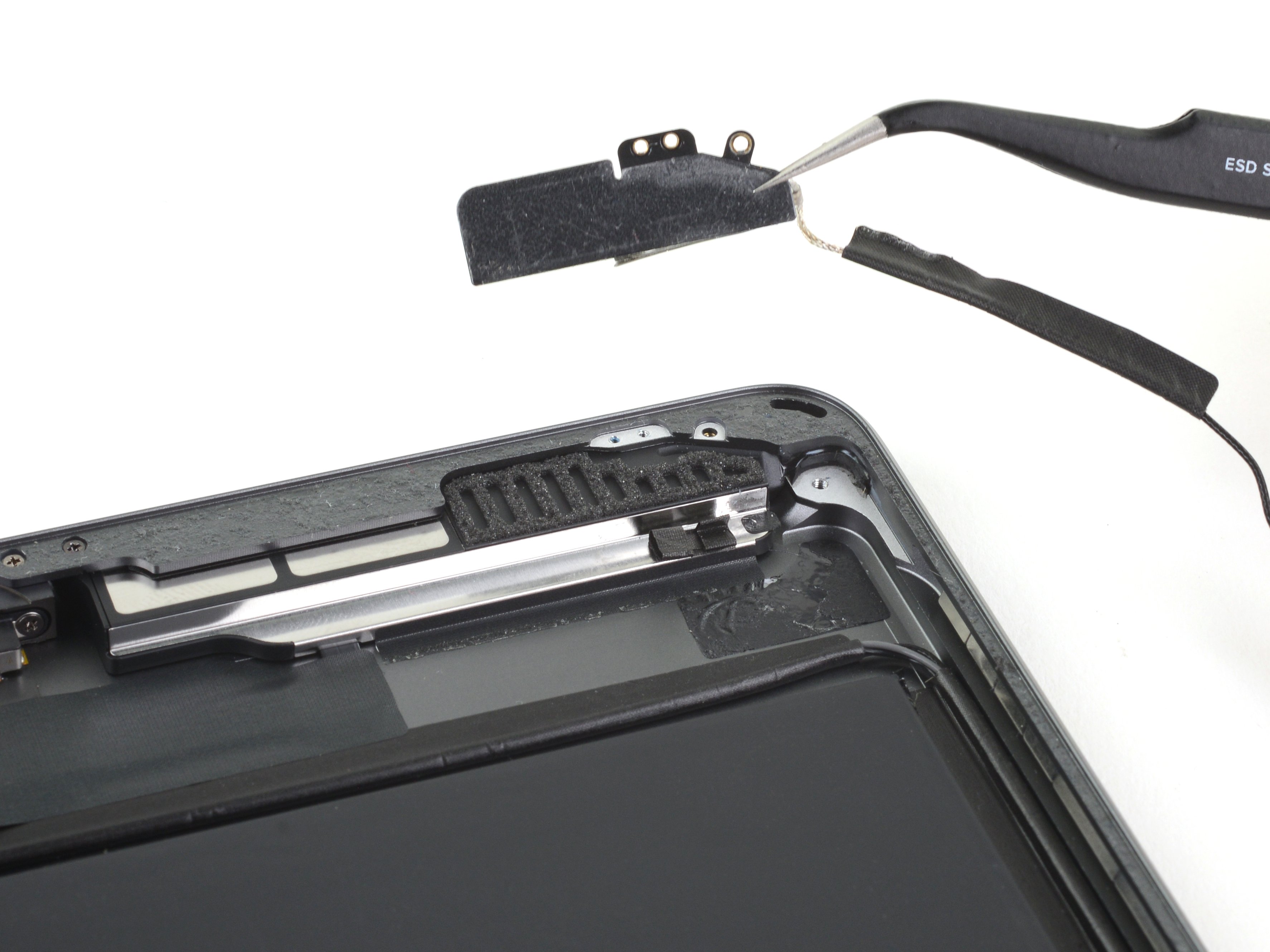How to Replace iPad 2 CDMA Camera Bracket – DIY Guide
Duration: 45 minutes
Steps: 36 Steps
Hey there, tech whiz! Just a quick heads-up: make sure to keep your workspace tidy and organized. Nobody wants to lose a tiny screw or a crucial part in the chaos, right? If you find yourself in a pickle, don’t hesitate to reach out for help. You can always schedule a repair and let the pros handle it!
Ready to swap out the camera bracket on your iPad 2 CDMA? You’ve got this! Just a heads up: some parts of this guide were filmed with a Wi-Fi model, so the insides might look a tad different from your cellular version. No worries, though—the process is the same for both models, except where we point out any differences. If you need help, you can always schedule a repair.
Step 1
It’s a great idea to give your microwave a little love before diving in, as any stubborn residue on the bottom might just hitch a ride on the iOpener.
– Pop that iOpener right in the middle of your microwave like it owns the place.
Tools Used
Step 2
Keep an eye on that iOpener! Overheating it could make it pop like a balloon, and nobody wants that. Aim to keep it under 100˚C (212˚F) for safety.
If your iOpener looks a bit puffed up, it’s best to steer clear. Safety first, right?
If the center of the iOpener is still too hot to handle, just hang tight and let it cool off a little longer before giving it another heat-up. A nicely heated iOpener should stay cozy for about 10 minutes.
– Give your iOpener a warm hug in the microwave for thirty seconds.
– As you work through the repair, keep that iOpener cozy by popping it back in the microwave for another thirty seconds whenever it starts to chill out.
Tools Used
Step 3
The iOpener gets pretty toasty, so handle it with care! Grab an oven mitt if you need a little extra protection for your hands.
– Carefully take the iOpener out of the microwave, gripping one of the flat ends to steer clear of the sizzling center. You’re doing great!
Tools Used
Step 4
No microwave? No problem! Just grab a pot and some boiling water to warm up your iOpener.
– Grab a pot or pan and fill it up with enough water to give your iOpener a nice, cozy bath.
– Heat that water until it’s bubbling away, then turn off the heat—time to make some magic happen!
– Carefully place your iOpener into the warm water for about 2-3 minutes. Just ensure it’s completely submerged—no floating allowed!
– Using tongs (safety first!), take the heated iOpener out of the hot water.
– Give your iOpener a good towel-dry, making sure it’s nice and ready to go.
– And voilà! Your iOpener is all set for action! If it needs a little more warmth, just repeat the boiling process and let it soak again for 2-3 minutes. If you need help, you can always schedule a repair.
Tools Used
Step 5
Put on those stylish safety glasses to keep your peepers safe, and watch out for that LCD screen – we want it in one piece!
– Got a cracked display glass? No worries! Let’s keep things safe and sound by taping it up to prevent any further breakage or accidental nicks during your repair journey.
– Grab some clear packing tape and lay down overlapping strips over the iPad’s display until it’s all covered up. You got this!
– Now, follow along with the rest of the guide as best as you can. Just a heads up: once the glass is broken, it might want to keep cracking as you go. You may find yourself using a metal prying tool to scoop out those pesky glass pieces. But hey, you’re doing great!
Step 6
Just a heads up! While you’re working on that device, you might encounter some pesky broken glass. To keep those eyes safe from any unexpected flying bits, we highly recommend sporting a pair of safety glasses. It’s all about staying safe while you repair like a pro!
– Place the iOpener flat against the right edge of the iPad, making sure it’s snug and cozy for a solid connection between the iPad and the iOpener.
– Allow the bag to chill on the iPad for about 90 seconds before you dive into opening that front panel.
Tools Used
Step 7
Getting that wedged tip of the opening tool in between the glass and plastic might take a bit of elbow grease. Just take your time and be gentle, giving the plastic tool a little wiggle back and forth when needed. You’ve got this!
– Hey there! Notice that tiny little gap in the adhesive ring at the upper right corner of your iPad? It’s about 2.0 inches (or roughly 5 cm) down from the top. Time to take advantage of that sneaky little weakness!
– Now, let’s get that tool aligned with the mute button. Gently insert the tip of your plastic opening tool into that gap between the front glass and the plastic bezel. Just slide in the very tip—enough to give the crack a little nudge!
Step 9
– With the plastic opening tool snugly positioned between the front glass and the plastic bezel, gently slide a plastic opening pick into that little gap right alongside the tool. You’re doing great!
Step 10
– Gently take out the plastic opening tool from your iPad, and slide that opening pick further under the front glass, reaching a depth of about 0.5 inches. You’re doing great!
Step 12
The adhesive is super sticky, and you might need to put in some elbow grease. Take your time and be gentle.
If you spot the tip of the opening pick peeking out from beneath the front glass, give it a gentle tug. While it’s perfectly safe to use the pick at this depth, it might leave some adhesive residue on your LCD. No biggie, just part of the adventure!
– As the iOpener warms up the bottom edge, start peeling back the adhesive from the right side of your iPad.
– Gently slide the opening pick down the edge of the iPad, freeing up the adhesive as you move along.
Tools Used
Step 13
As you peel back the adhesive, you might want to slide that warm iOpener back onto the right edge of your iPad. The timing depends on how long your iPad has been chilling while you were busy working your magic.
– If the opening pick is feeling a bit clingy in the adhesive, just give it a little ‘roll’ along the side of the iPad to help it break free and keep on releasing that sticky stuff.
Tools Used
Step 14
– Before you dive in and remove that first opening pick from the bottom corner of your iPad, pop a second pick right under the right edge of the front glass. This little buddy will help keep the adhesive from getting clingy again!
– Give your iOpener a quick reheat, then gently place it at the top edge of your iPad. You’re on the right track!
Tools Used
Step 15
Hey there! The Wi-Fi antenna is snugly fixed to the bottom right corner of the rear case of your iPad with screws and a cable. Since the antenna has a unique orientation, it’s super important to handle it with care. A little caution now can save you from some serious Wi-Fi woes later!
– Alright, folks, it’s time to tread carefully in the next few steps. We’re about to release the adhesive that’s holding the antenna snugly to the front panel. Just a friendly reminder: let’s make sure we don’t accidentally damage those delicate connections to the bottom of the iPad. So, keep your eyes peeled and follow along closely!
Step 16
Hey there! Just a quick heads up: don’t slide that pick too far into the bottom right corner. It could accidentally mess with the Wi-Fi antenna, and we definitely don’t want that!
– Gently glide that trusty opening pick around the bottom right corner of your iPad, and watch as the adhesive gives way like a champ!
Step 17
As you glide that opening pick along the bottom right edge of the front panel, keep an eye out! The Wi-Fi antenna is lurking close to the corner, and it’s a bit sensitive. If the adhesive gets released the wrong way, it might just wave goodbye. So, take it easy and be careful!
Keep that pick snug under the front glass—just a little peek is all you need! Pull it out gently, leaving about 1/8″ (3 mm) of the tip cozy beneath the glass.
– Gently glide the tip of the opening pick along the bottom edge of your iPad to release the adhesive securing the Wi-Fi antenna. You’re almost there!
Step 18
– After you’ve navigated past the Wi-Fi antenna—about 3 inches (75 mm) from the right edge, right by the home button—slide that opening pick back in until it’s fully seated.
– Now, gently glide the pick to the right to free up the adhesive that’s holding the Wi-Fi antenna snug against the front glass.
Step 19
Keep your iOpener cool, my friend! Heat it for just a minute at a time and give it a breather for at least two minutes before you heat it up again. You’ve got this!
– Keep working that adhesive loose along the bottom of the iPad! Gently pull out the opening pick just enough to navigate around the home button, and then slide it back in to a depth of about 1/2 inch (10 mm) once you’ve passed the home button. You’ve got this!
Tools Used
Step 20
– Keep on peeling that adhesive all along the bottom edge of your iPad! You’re doing great!
– Once you’ve got that adhesive under control, pop the opening pick right under the front glass, close to the home button. It’s like giving your iPad a little hug!
Step 22
If your adhesive has gotten a bit too cool, just swap out the iOpener along the top edge and keep on working your magic. If the iOpener has lost its warmth, give it a little reheat to get back in the game!
– Gently glide the opening pick along the top edge of your iPad, giving it a little tug to navigate around the front-facing camera bracket.
– The adhesive in this area is pretty stubborn, so you might need to apply a bit of muscle. Take your time and be cautious to avoid any slips that could lead to mishaps with your iPad.
– If the opening pick seems to be stuck in the adhesive, try ‘rolling’ the pick as demonstrated in step 9.
Tools Used
Step 23
If the adhesive is feeling nice and toasty, go ahead and take the iOpener off the iPad for a bit of ease. But if it’s still a bit clingy, just give the iOpener another heat-up and place it on the left edge while you dive into the work.
– Keep peeling away the adhesive at the top edge of your iPad, and gently maneuver the opening pick around the top left corner. You’re doing great!
Tools Used
Step 24
The digitizer cable hangs out about 2″ (50 mm) up from the bottom of your iPad. When you’re around 2.25″ (60 mm) from the bottom, it’s time to stop sliding that pick. You’ve got this!
– Gently glide that opening pick along the left edge of your iPad, releasing the adhesive as you go! The adhesive is pretty thin here thanks to the digitizer running down the whole left side. Just a friendly reminder: keep the pick no deeper than about half an inch (10 mm) to avoid any accidental damage to the digitizer. You’re doing great!
Step 25
Careful now! The bottom of the digitizer cable is just about an inch (25 mm) from the bottom of the iPad. Take your time and handle it gently to avoid any accidental snips!
– With the trusty opening pick still nestled under the bottom edge of your iPad, gently free the adhesive at the bottom left corner. Let’s get that thing open!
Step 26
– Grab one of those nifty opening picks and gently lift the bottom right corner of your iPad. Once it’s popped up, give it a little pinch with your fingers to hold it steady.
Step 27
Watch out for any sticky stuff that might still be hanging around, and grab your opening pick to slice through any adhesive that could be keeping the front panel in place.
– Grab your iPad by the top and bottom right corners and give that front glass a gentle twist away from the device. You’ve got this!
– When putting everything back together, don’t forget to give the LCD a little TLC with a microfiber cloth and some compressed air to zap away any dust bunnies or fingerprints before sealing it up.
Step 28
– Unscrew the four 2.0 mm Phillips #0 screws that are holding the LCD tightly to the rear case. You’ve got this!
Step 29
– The front panel ribbon cables are tucked away under the LCD. To reach them, just give the LCD a little flip over and out of the way for a moment.
– Gently lift the LCD from the edge closest to the volume buttons and flip it out of the rear case—think of it like flipping a page in your favorite book.
– Now, lay the LCD face down on the front panel, giving it a comfy spot to rest.
Step 30
Remember to gently lift the hinged retaining flaps, not the sockets themselves. You’ve got this!
Check out the second picture where the retaining flaps are marked in a vibrant red for your convenience!
– Gently use the edge of a plastic opening tool to lift up the retaining flaps on the two digitizer ribbon cable ZIF sockets. You’ve got this!
Step 31
– Grab your trusty plastic opening tool and gently coax the digitizer cable away from the shields on the logic board. It’s like giving it a little hug to help it let go!
– Now, with a delicate touch, peel the digitizer cable off the sticky adhesive that’s been holding it snugly against the side of the rear case. Think of it as helping it to break free!
Step 32
– Gently wiggle and pull the digitizer ribbon cable straight out of its cozy little sockets on the logic board. You’ve got this!
Step 33
To get that front panel assembly off, you’ll want to gently coax the ribbon cable out from its snug spot between the case and the LCD. A little wiggle of the LCD will create just the right amount of space to make it happen.
– Gently lift the LCD from its long edge that’s farthest from the digitizer cable and smoothly flip it back like you’re closing a book.
– While keeping the LCD elevated, carefully slide the front panel away from the iPad. Just a friendly reminder—watch out for the digitizer cable to avoid any snags on the rear case or LCD!
Step 34
The camera bracket is stuck to the front panel with some adhesive love. To make things easier, it’s a smart move to use an iOpener to gently warm up and loosen that sticky stuff.
– Check out the iOpener heating instructions in the iOpener heating section at the start of this guide—it’s super easy!
– Now, place the iOpener right over the front-facing camera at the top edge of the display. You’re doing great!
Tools Used
Step 35
The camera bracket can shimmy about 2 mm to the right or left, depending on which way you give it a gentle nudge.
– Grab the flat end of your trusty spudger and gently nudge the camera bracket off the sticky stuff that’s keeping it cozy with the front panel.
Step 36
– Gently lift the camera bracket off the front panel and set it aside. You’re doing great!
















































































